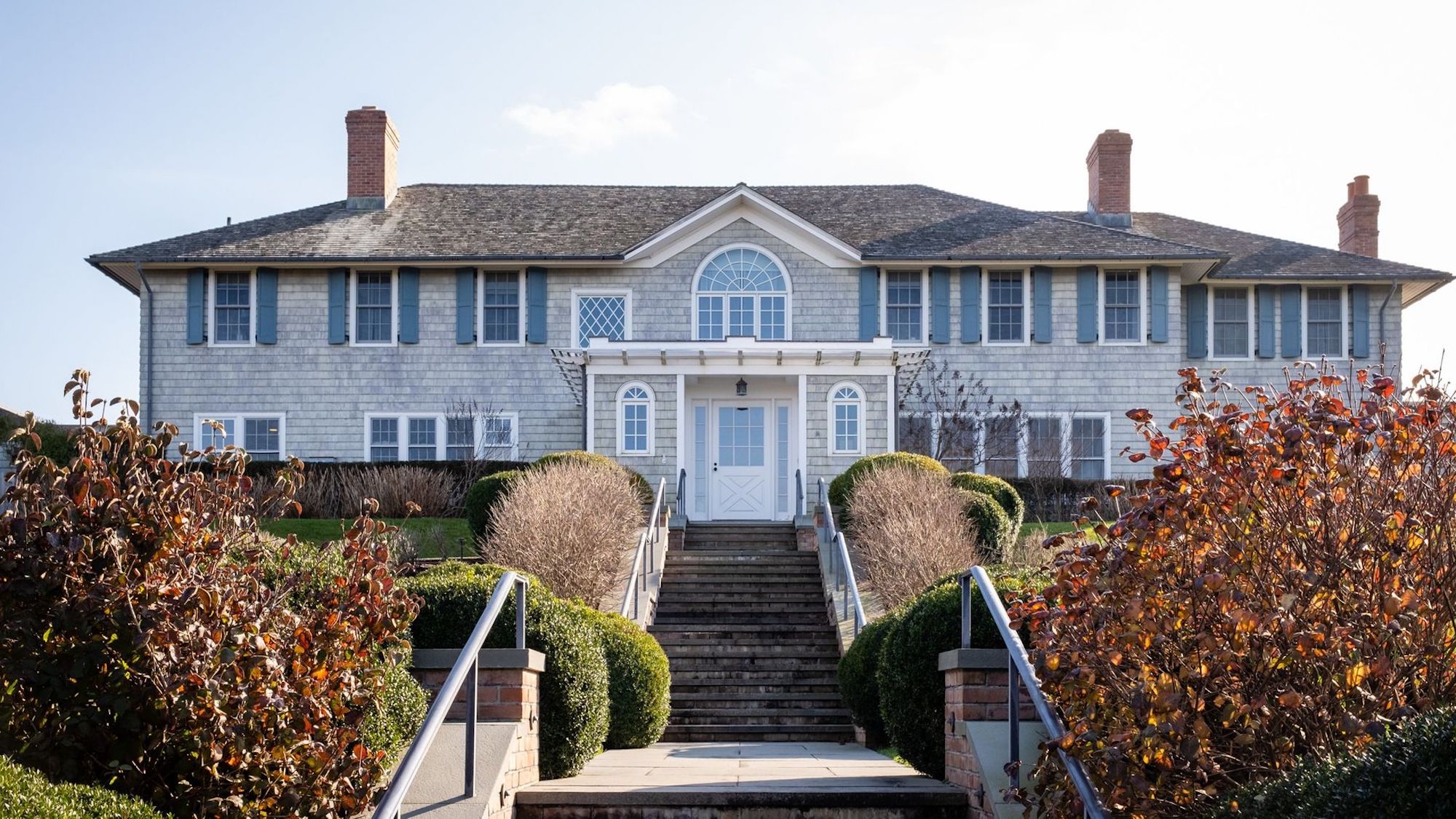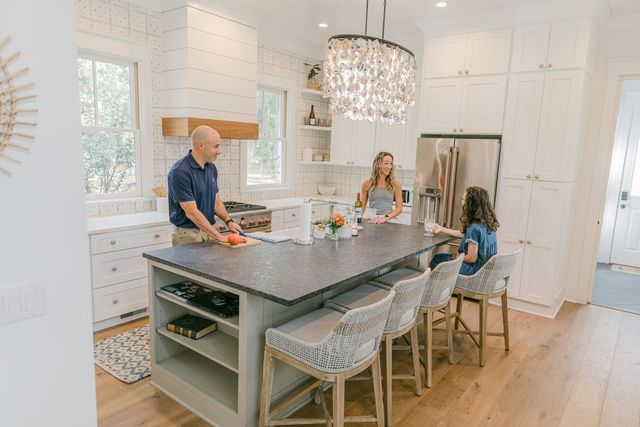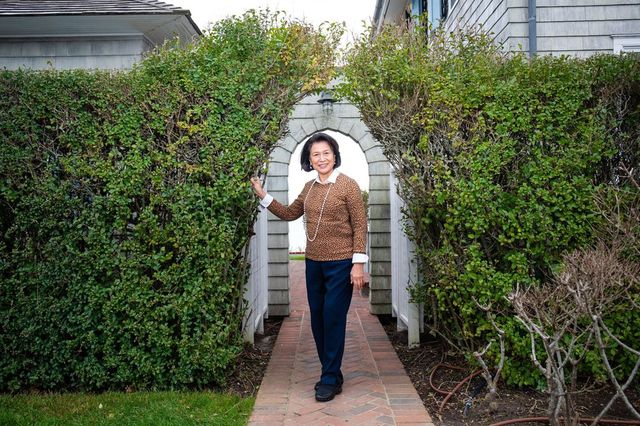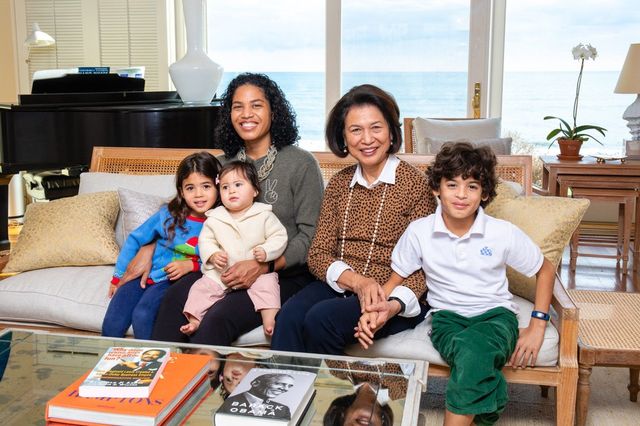
Lanna Apisukh for The Wall Street Journal
Stephanie Trunzo used to jet around America as global vice president at Oracle from her base in a 6,800-square-foot Raleigh, N.C., house. These days, she can be found watching alligators snack on seafood from the back porch of her three-bedroom, three-bathroom Daufuskie Island, S.C., home, where she retreated with her husband, Ryan Malynn, and daughter to ride out the pandemic.
“We looked at is as a bunker, a bubble away from fear,’’ said Ms. Trunzo, 43. She and her husband, 43, purchased the $920,000 home a year ago. “It’s as if we’ve returned to childhood and are playing outside. We are like Davy Crockett off exploring in the wilderness.”
Ms. Trunzo and Mr. Malynn are far from alone in their newfound appreciation for a more basic life. From New York to San Francisco, urbanites have escaped to bucolic second homes and found a deeper connection to the nature that surrounds them. While some might miss the culture and socializing of their past lives, others have developed a sort of reverse snobbery, celebrating their inner hicks, switching up their Porsches for Ford Broncos and expressing pity for wretches who breathe fouler air. They take pride in their chicken coops, check in with their landscapers as if they were stockbrokers, and have that same gleam in their eyes that Eddie Arnold had as he traded in his suit for overalls in the TV show “Green Acres.”

Katherine Ives for The Wall Street Journal
In Raleigh, Ms. Trunzo and Mr. Malynn paid for their daughter’s horse to be groomed, but now the 13-year-old is mucking out the stables herself. Ms. Trunzo, who dined out almost nightly, has been catching dinner from the Calibogue Sound.
Recently divorced Louis Hoffer, 57, has taken on the roles of plumber, gardener and carpenter since relocating from Seattle. To flee Covid, he decamped to the $2.4 million, three-bed, three-bath vacation condo in Sun Valley, Idaho, that he purchased in 2007 and added on to in 2014. He is redoing his deck and bathrooms and trying to landscape.
“These are the things subcontractors are for but you can only do so much hiking and biking, and since there is no symphony or ballet, I thought I would take these things on,’’ said Mr. Hoffer.
PHOTOS
He sanded and finished the porch but miscalculated the drying process, so it remained interminably wet and sticky. The bathroom project went more smoothly. He changed the shower heads, removed the toilets and installed Toto bidets.
“I’ve enjoyed doing this but I’m pretty inefficient because I stop for a cold beer every hour,” he said.
Dan Gasby, widower of lifestyle guru Barbara Smith, who, along with his wife, ran the B. Smith brand, has turned his back on his glamorous Manhattan lifestyle in favor of chopping firewood on his East Hampton, N.Y., property.
Mr. Gasby, 66, first bought the modern seven-bedroom, 6½-bath property, now valued at over $5 million, in 2017. After the pandemic he moved there full time. He likes to roam the 10 acres, on which he has created a dog run for his three Italian mastiffs and a mile-long jogging path.
“I had two penthouses in Manhattan but I don’t miss it,’’ he said. “The last time I went back the only thing I could see were ambulances and people walking around like the living dead. It made me realize how lucky I am to be living in a place where I get to see deer, hawks and rabbits.”

Lanna Apisukh for The Wall Street Journal
Encounters with wildlife aren’t always wondrous.
“A big black bear ate our dog food!” said Ken Frydman, a 62-year-old crisis counselor whose run-ins with growling creatures were previously restricted to aggressive clients. Mr. Frydman met his wife Liz Bruder, 62, when they both worked on Rudy Giuliani’s 1993 mayoral campaign. He now represents three NYPD unions, and moved during the pandemic from New York’s Upper West Side to the three-bedroom, 2 ½-bath home in Sharon, Conn., that he bought in 2009 for $500,000.
“Could I do more business being in Manhattan?” asked Mr. Frydman. “Maybe, but my phone still rings. We watched soaring eagles and saplings grow in real time and are blissfully spared from the city’s chaos.”
Mr. Hoffer reported that animals were flocking into Sun Valley’s town to dodge the hunters. “The elk are mixing with the horses,” he said. “I think they believe they are disguising themselves.”
Elizabeth Marston, 41, relocated from London, where she worked on a project in the Egyptology department at the British Museum, to her family’s 40-acre vineyard in Napa Valley. She abandoned the sarcophagi, moved into her two-bedroom, two-bathroom cottage on the property and began working with the grapes and learning to drive a tractor. She loved the birds and going frogging with her nieces and nephews, but when a rattlesnake crossed her path, she was less enthusiastic. “I had to call a man who came with his stick and bucket,” she said. “I never thought I would have the snake guy in my Rolodex!”
Sadly, after five months of living with her family, making fig jam on Sunday mornings and going to the market with her little red wagon, tragedy struck. The wild fires that had been ravaging the area destroyed two of the five homes on the estate, including her cottage and her parents’ home. “You are told to isolate and stay home and then the very place you are supposed to be safe is under threat,” she said. She went back to London briefly after the fire and is now working remotely from France.
Urban refugees are taking pride in working the land and growing their own food. Ms. Marston said she “lived and breathed” the vineyard, tucking in vines and opening leaves, but others found growing things a bit challenging.
Mr. Hoffer just got the timing off. He enthusiastically ordered three hundred bulbs online but they arrived late when the ground was already too hard for planting.
“I would have needed a jackhammer!” he said. Not wanting to discard them, he moved them all to cardboard boxes filled with shredded paper. “I now have 300 bulbs in my garage waiting for spring.”
Philanthropist Loida Lewis didn’t have better luck at her 6-acre oceanfront home in East Hampton. After two tenants in her Manhattan office building contracted Covid, Ms. Lewis, who preferred not to give her age, moved to the 11-bed, nine-bath estate, which she purchased in 1995 for $13 million, with her daughter Christina Lewis, 40, and grandchildren to shelter from the pandemic. There, she attempted to grow her own produce.
“My gardener quit because he couldn’t find enough help, so we decided to do it ourselves,” said Ms. Lewis, the widow of billionaire entrepreneur Reginald Lewis.
A storm destroyed much of the crop but she hasn’t given up. Though they returned to the city because the children were called back to school, they will be planting again in the spring.
“It’s wonderful to watch something grow from a seed,” she said.
There have also been big style changes for the new country folk. Ms. Lewis has left her usual daywear of suits at her five-bedroom, 4½-bath 5th Avenue apartment, so her daughter has been urging her to buy new togs.
“I have jeans so why should I buy new jogging pants?” she said. “I grew up in a Third World country. I am thrifty.”
Mr. Hoffer has donated his suits to Goodwill, traded in his Range Rover for a 1995 Defender and travels to town on an old bicycle with a metal basket. “I saved a couple of Brooks Brothers shirts but I get some stares when I wear them, so my flannel and L.L. Bean collections are definitely growing,” he said.
Mr. Frydman and Ms. Bruder may have changed their daily routine, but she clings to some sartorial relics of her city life.
“She insists on wearing her Jimmy Choo flats on our hikes and Prada slip-ons to garden,” he said.

Lanna Apisukh for The Wall Street Journal
For most of these former slickers, the rural experience has been transformative. Ms. Marston said her family will rebuild what has been destroyed.
“Everyone is still in shock and grief,” said Ms. Marston, “but this was the first time we were all living there together and we found it so meaningful to share the property as a family, that it’s a tradition we will continue.”
The Trunzos have become entrenched in the island community, riding around in their golf cart and studying Gullah cooking. They are looking for property for their own farm. When things normalize, they plan to spend most of their time on Daufuskie Island.
“I have so many colleagues who are in 500-square-foot studios and their lives are very different from mine right now,” said Ms. Trunzo.
The post For These Urban Refugees, Country Living Isn’t Quite Second Nature appeared first on Real Estate News & Insights | realtor.com®.
